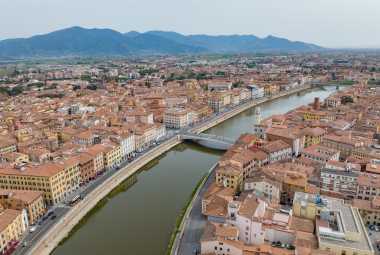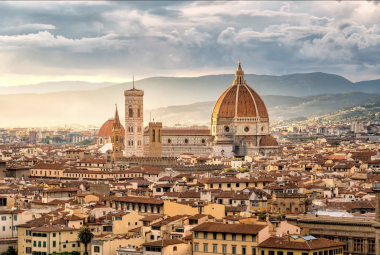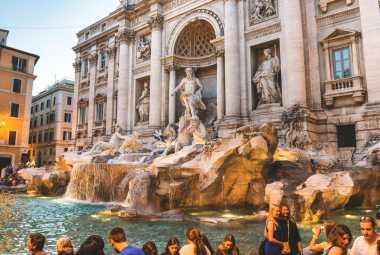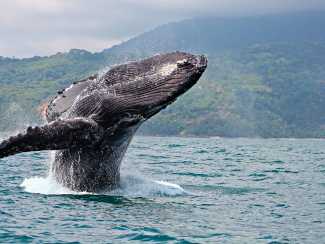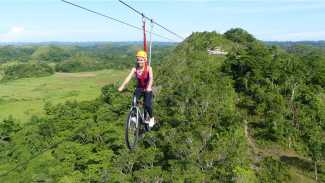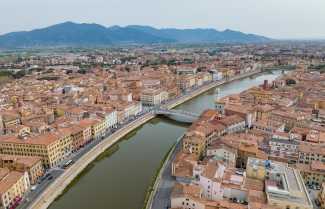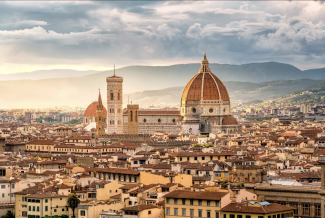Image by italia.it
*Vacation Mode is a for-profit site. It contains paid banner advertisements that are generated and managed by a third-party network. This site also includes relevant affiliate links (both in the content and on the sidebar) all of which we do our best to clearly mark as such.
Quick Summary
-
Best Time to Visit Florence:
- Florence is enchanting year-round, with each season offering unique experiences.
- Spring (March-May): Ideal for mild temperatures, blooming flowers, and outdoor exploration.
- Summer (June-August): Warm weather perfect for sightseeing and cultural events, but expect peak tourist crowds.
- Autumn (September-November): Fewer crowds, comfortable temperatures, and vibrant fall foliage.
- Winter (December-February): Quieter atmosphere, Christmas markets, and fewer crowds.
-
Weather and Seasons:
- Spring: Mild temperatures (10-20°C), perfect for city gardens and outdoor cafes.
- Summer: Warmer weather (25-35°C), ideal for outdoor attractions and panoramic views.
- Autumn: Cooler temperatures (10-20°C), great for historic site walks and wine tastings.
- Winter: Chilly temperatures (0-10°C), festive markets, and indoor museum visits.
-
Rainfall and Humidity:
- Rainy seasons: October-November and April-May, impacting outdoor activities.
- Dry season: June-September, with sunny days for exploring Florence's outdoor attractions.
- Humidity levels vary, affecting comfort; high during peak tourist seasons.
-
Crowds and Tourist Season:
- Peak periods: Spring and summer, with high footfall at major attractions.
- Off-peak times: Fall and winter, offering a serene experience and a chance to live like a local.
-
Top Events and Festivals:
- Florence hosts vibrant events year-round, from the Easter Scoppio del Carro to the summer Calcio Storico, and autumn wine festivals to winter holiday decorations.
- Festivals spread across the calendar offer cultural, music, and art celebrations.
-
Pros and Cons of Visiting During Different Seasons:
- Spring: Pleasant weather and cultural vibrancy, with occasional showers.
- Summer: Long days and vibrant atmosphere, but crowded and hot.
- Fall: Ideal for exploration with fewer crowds and mild weather, but some attractions may have reduced hours.
- Winter: Fewer tourists and lower rates, festive ambiance, but shorter days.
-
Attractions by Season:
- Spring attractions include Boboli Gardens and Piazzale Michelangelo.
- Summer features vibrant festivals and outdoor concerts.
- Fall is perfect for enjoying Tuscan cuisine and admiring the foliage.
- Winter highlights include festive lights and Christmas markets.
-
Frequently Asked Questions:
- Best travel times are mid-April to mid-June and mid-September to October for mild weather and fewer crowds.
- Events like the Maggio Musicale Fiorentino and Festa della Rificolona occur during these optimal travel times.
- Summer, despite being peak season, might not be the best due to crowds and higher prices.
- Weather during the best travel times averages around 22°C (72°F), but it's advisable to check forecasts.
- Discounts and deals are often available during off-peak seasons, offering more affordability.
- Planning and booking in advance are recommended to fully experience major attractions without the hassle of long lines.
Planning a trip to Florence but unsure of the best time to visit?
In this comprehensive guide, we explore the ideal times to travel to Florence based on weather, crowds, and top events and festivals. From average temperatures and rainfall to the highlights of each season, we help you make the most of your trip.
Whether you're a spring flower lover or a winter wonderland enthusiast, we've got you covered. Let's dive in!
When Is the Best Time to Travel to Florence?
Planning a trip to Florence involves considering the best time to visit this enchanting city in Italy, taking into account the weather conditions and seasonal variations.
-
Each season in Florence offers a unique charm, catering to different travel preferences. Spring, from March to May, is ideal for mild temperatures and blooming flowers, perfect for exploring the city's gardens and enjoying outdoor cafes.
-
Summer, spanning June to August, brings warm weather that is great for sightseeing and attending cultural events, despite being peak tourist season.
-
Autumn, from September to November, sees fewer crowds, comfortable temperatures, and vibrant fall foliage, making it ideal for leisurely walks around historic sites.
-
Winter, from December to February, offers a quieter atmosphere, Christmas markets, and the chance to appreciate Florence's art and architecture without the summer crowds.
Each season presents distinct attractions and events, such as the famous Maggio Musicale Fiorentino in spring, the traditional Calcio Storico in summer, the wine festivals in autumn, and the holiday decorations in winter.
To make the most of your visit, consider booking accommodations and tickets in advance, especially during peak seasons, and stay flexible with your itinerary to embrace unexpected delights that each season brings.
What Is the Weather Like in Florence?
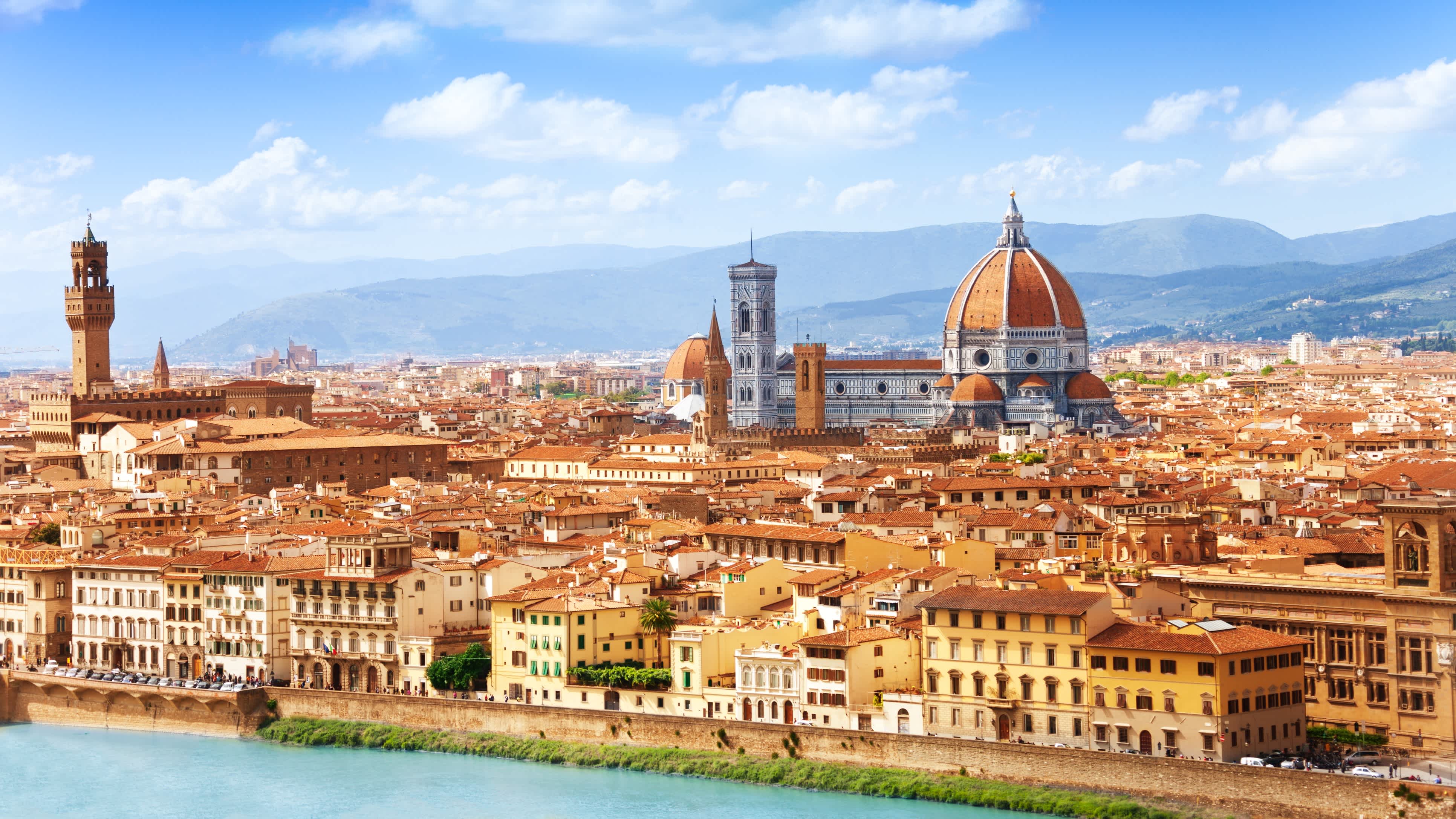
The weather in Florence, Italy, showcases a diverse climate throughout the year, offering travelers a mix of temperatures, humidity levels, and atmospheric conditions.
Spring in Florence brings mild temperatures ranging from 10-20°C, with blooming flowers adding charm to city sightseeing.
Summer brings warmer weather, ranging from 25-35°C, ideal for exploring outdoor attractions like the Boboli Gardens or climbing the Duomo for panoramic views.
Autumn sees cooler temperatures around 10-20°C, perfect for strolling through the city's historic streets or enjoying local wine tastings.
Winter can be chilly, with temperatures ranging from 0-10°C, allowing visitors to experience festive Christmas markets and indoor museums.
What Are the Average Temperatures in Florence?
Florence experiences a range of average temperatures throughout the year, with summer temperatures often reaching highs and winter temperatures being relatively cooler.
The summer months in Florence, typically from June to August, bring warm temperatures averaging around 30°C (86°F), making it ideal for exploring the city's outdoor attractions and dining alfresco at quaint cafes.
In contrast, winter temperatures from December to February can drop to around 5°C (41°F), creating a cozy atmosphere for enjoying hot chocolates and visiting indoor museums.
The temperature variations between summer and winter play a significant role in tourists' comfort, influencing their choice of activities and the overall experience of visiting this beautiful Italian city.
What Is the Rainfall Like in Florence?
Rainfall in Florence varies across different seasons, with some months experiencing heavier rainfall while others offer drier conditions for travelers to explore the city.
During the rainy season, which typically occurs from October to November and April to May, travelers may encounter frequent showers and thunderstorms. This can impact outdoor activities such as walking tours and visits to the city's famous gardens and parks.
On the other hand, the dry season, spanning from June to September, provides visitors with sunny days and ideal conditions for exploring Florence's outdoor attractions, including the iconic landmarks and picturesque countryside. The rainfall patterns greatly influence the overall ambiance of the city, with the sound of rain adding a romantic touch to its charming streets and piazzas.
What Is the Humidity Like in Florence?
Humidity levels in Florence fluctuate throughout the year, impacting the perceived comfort of visitors exploring the city and engaging in various activities.
During the peak tourist seasons, the humidity in Florence tends to be higher, making it feel warmer and stickier, which can be challenging for travelers not accustomed to such conditions. High humidity levels can also exacerbate fatigue and discomfort, especially when walking long distances or climbing the city's historic cobblestone streets.
To cope with the humidity, it's advisable to stay hydrated, wear light and breathable clothing, and take breaks in shaded areas or air-conditioned spots. The influence of humidity on sightseeing experiences can vary; while it may enhance the lushness of gardens and green spaces, it can also lead to a less pleasant experience when visiting crowded indoor attractions.
What Is the Crowds and Tourist Season in Florence?
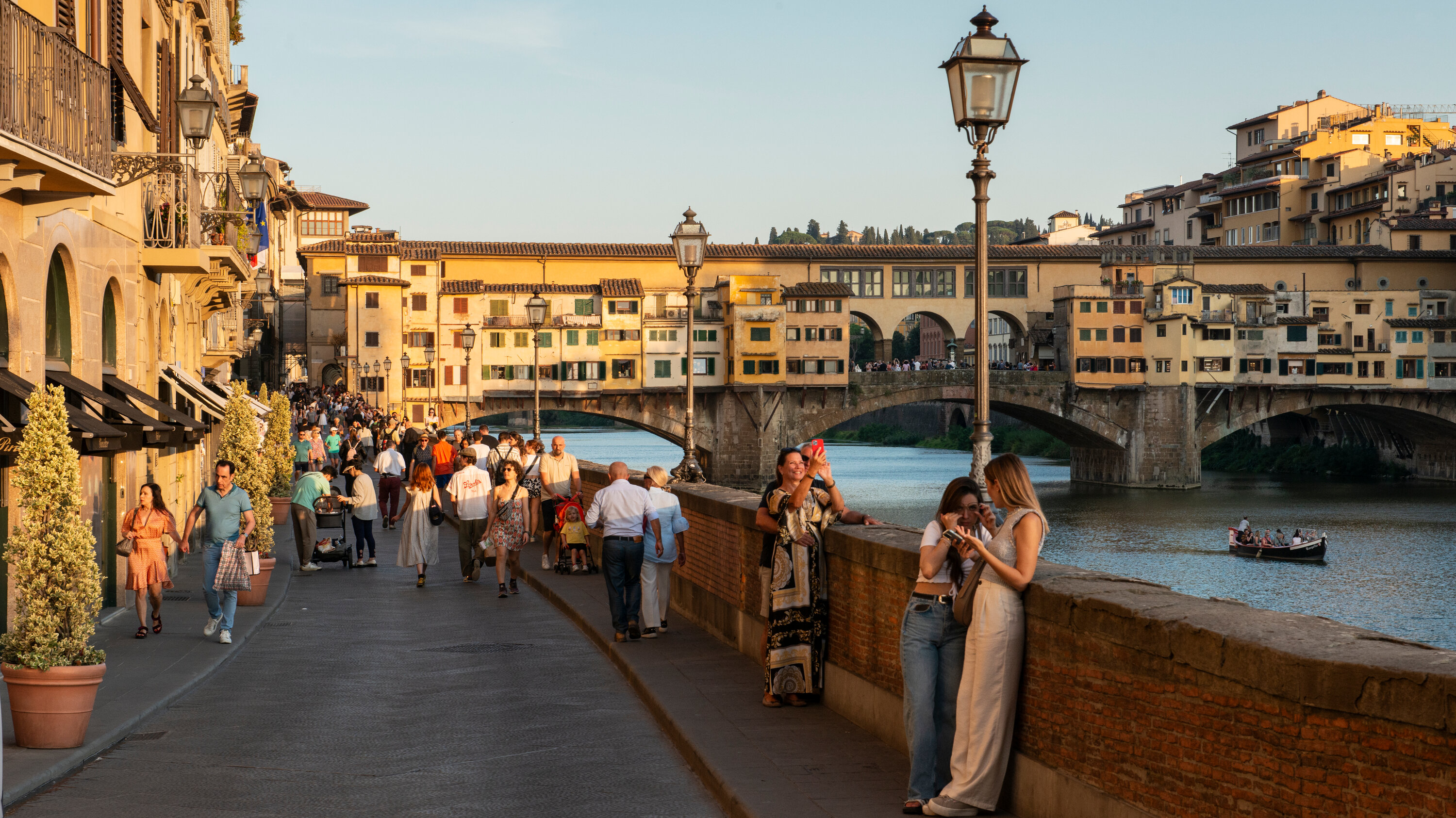
Florence attracts varying crowds throughout the year, with peak tourist seasons witnessing higher footfalls and off-peak seasons offering a more serene and less crowded experience.
During the peak periods, such as spring and summer, the city pulsates with energy as tourists flock to iconic sites like the Duomo and Uffizi Gallery. To avoid the crowds, consider exploring early in the morning or late in the evening. For a more authentic experience, venture off the beaten path to discover hidden gems like local markets, cozy cafes in quiet neighborhoods, or lesser-known museums.
Off-peak times, in fall and winter, provide a chance to immerse yourself in the local way of life, enjoying leisurely strolls along the Arno River and cozying up in traditional trattorias.
What Are the Top Events and Festivals in Florence?
Florence hosts a vibrant array of events and festivals throughout the year, celebrating art, music, culture, and local traditions that showcase the city's rich heritage.
From the historic Scoppio del Carro during Easter, where a cart filled with fireworks is paraded through the streets, to the mesmerizing Maggio Musicale Fiorentino, one of the oldest music festivals in Italy held during May and June, travelers have ample opportunities to engage with the city's vitality.
The Festa della Rificolona in September, with its lantern-lit procession, and the colorful Calcio Storico in June, a unique blend of football, rugby, and wrestling, are must-see events for an authentic Florentine experience."
What Are the Dates for the Events and Festivals in Florence?
The events and festivals in Florence are spread across the calendar year, offering visitors a chance to participate in cultural celebrations, music festivals, and art exhibitions at various times.
From the vibrant Carnival celebrations in February to the renowned Maggio Musicale Fiorentino in May, there is something for every cultural enthusiast.
The Tuscan Sun Festival in June marks a celebration of arts, music, and cuisine. The Florence Dance Festival in July showcases world-class performances, while September's Rificolona Lantern Festival enchants the city with a sea of lanterns. The Florence Biennale in October highlights contemporary art.
These events not only attract tourists but also nurture the local community's creative spirit, making Florence a dynamic hub of cultural expression.
What Are the Highlights of Each Event or Festival?
Each event and festival in Florence offers unique highlights, ranging from spectacular parades and performances to traditional ceremonies and artistic showcases that captivate both locals and visitors.
During these celebrations, one cannot miss the iconic Calcio Storico, a historic sporting event dating back to the 16th century, where four teams compete fiercely in a mix of football, rugby, and wrestling.
The Florence Gelato Festival entices with a variety of delectable frozen treats crafted by renowned gelato artisans.
The Florence Film Festival also draws cinephiles from around the world, showcasing a diverse array of international and independent films in stunning venues throughout the city.
What Are the Pros and Cons of Visiting Florence During Different Seasons?
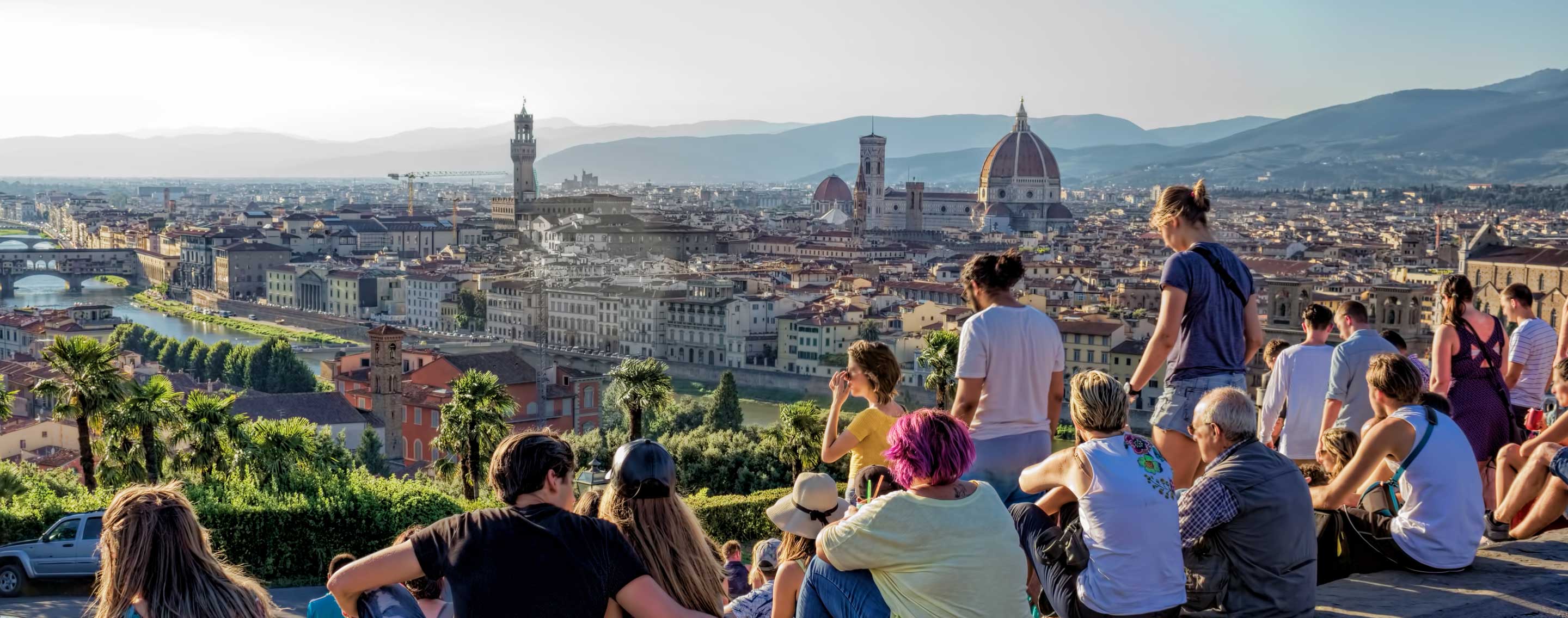
Traveling to Florence during different seasons offers a mix of advantages and challenges, with each season presenting unique opportunities and considerations for visitors exploring the city.
Spring is a wonderful time to visit Florence, as the city comes alive with blooming flowers and pleasant temperatures. Visitors can enjoy outdoor activities in parks and gardens, such as picnics along the Arno River or exploring the Boboli Gardens. The vibrant cultural scene also kicks into high gear during this season, with art exhibitions and music festivals dotting the city's calendar. Spring can also bring occasional showers, so it's advisable to pack an umbrella.
Summer, on the other hand, brings scorching temperatures but offers longer days to explore the sights. Tourists flock to Florence during this season, leading to crowded attractions and higher prices. Despite the heat, visitors can indulge in gelato and refreshing drinks at outdoor cafes, savoring the lively atmosphere of the city.
Fall brings cooler weather and fewer crowds, making it an ideal time for quieter exploration of Florence's art and architecture. The changing colors of the surrounding Tuscan countryside add a picturesque backdrop to sightseeing tours. Some attractions may have reduced hours or seasonal closures, so it's important to plan accordingly.
Winter in Florence is characterized by fewer tourists and lower accommodation rates, providing a more intimate experience for travelers. The city's holiday decorations and Christmas markets create a festive ambiance, while indoor attractions like museums and galleries offer respite from the chilly weather. Keep in mind that winter days are shorter, limiting daylight hours for exploration.
Each season in Florence has its own charm, catering to diverse tastes and preferences, making it a year-round destination worth exploring.
Spring (March - May)
Spring in Florence brings blooming flowers, pleasant temperatures, and a sense of renewal, making it an ideal time to explore the city's outdoor attractions and cultural landmarks.
The charming streets of Florence come alive in the spring, with colorful bougainvillea cascading down ancient walls and vibrant markets bursting with fresh produce. Travelers can enjoy leisurely walks along the Arno River, visit the iconic Florence Cathedral, or take a relaxing stroll through the Boboli Gardens.
As the weather warms up, locals and visitors alike flock to the picturesque Piazzale Michelangelo to enjoy breathtaking panoramic views of the city. Spring in Florence also marks the start of numerous festivals, from the famous Explosion of the Cart on Easter Sunday to the Maggio Musicale Fiorentino, a renowned music festival that celebrates the art of opera.
Whether you're a history buff, art enthusiast, or simply looking to bask in the beauty of spring, Florence offers a delightful mix of cultural experiences and natural wonders during this enchanting season.
Summer (June - August)
Summer in Florence attracts crowds of tourists seeking sunny days, al fresco dining, and vibrant cultural experiences, but it also brings warm temperatures and peak tourist traffic to the city.
Walking through the cobblestone streets lined with historic architecture, one can feel the energy of the bustling atmosphere as locals and visitors alike immerse themselves in the rich history and artistic heritage of Florence.
Despite the challenges of navigating through the throngs of tourists, there are ways to make the most of the summer delights in the city. From enjoying gelato in iconic piazzas to exploring renowned museums like the Uffizi Gallery, Florence offers a blend of relaxation and cultural exploration in the midst of the summer buzz.
Fall (September - November)
Fall in Florence paints the city in warm hues of autumn, offering a time of harvest festivals, mild weather, and fewer crowds, making it an ideal season for leisurely exploration and culinary delights.
The crisp air of fall in Florence invites visitors to stroll through the streets adorned with vibrant leaves, creating a picturesque setting for cultural immersion. From the historic museums showcasing local artisans' work to the cozy cafes serving seasonal specialties, the city comes alive with a charm that captivates all who wander its cobblestone paths.
Embrace the essence of the harvest season by joining the locals in traditional celebrations, witnessing the rich cultural traditions that mark this time of year. Autumn in Florence not only tantalizes the taste buds with its culinary events but also provides an opportunity to delve into the city's heritage through unique experiences offered during this magical season.
Winter (December - February)
Winter transforms Florence into a cozy wonderland of holiday lights, festive markets, and cultural events, offering visitors a chance to experience the city's charm amidst cooler temperatures and fewer tourists.
During this enchanting season, visitors can immerse themselves in the magical atmosphere of Florence by taking part in the traditional Christmas markets that pop up throughout the city, where artisanal goods and local delicacies abound.
Exploring the iconic museums and galleries, such as the Uffizi Gallery or the Galleria dell'Accademia, takes on a new allure in the wintertime, offering a more intimate and immersive experience.
For a scenic view of the city dusted in snow, a visit to the Piazzale Michelangelo is a must, providing panoramic vistas that capture the winter beauty of Florence.
What Are the Top Attractions to See in Florence During Each Season?
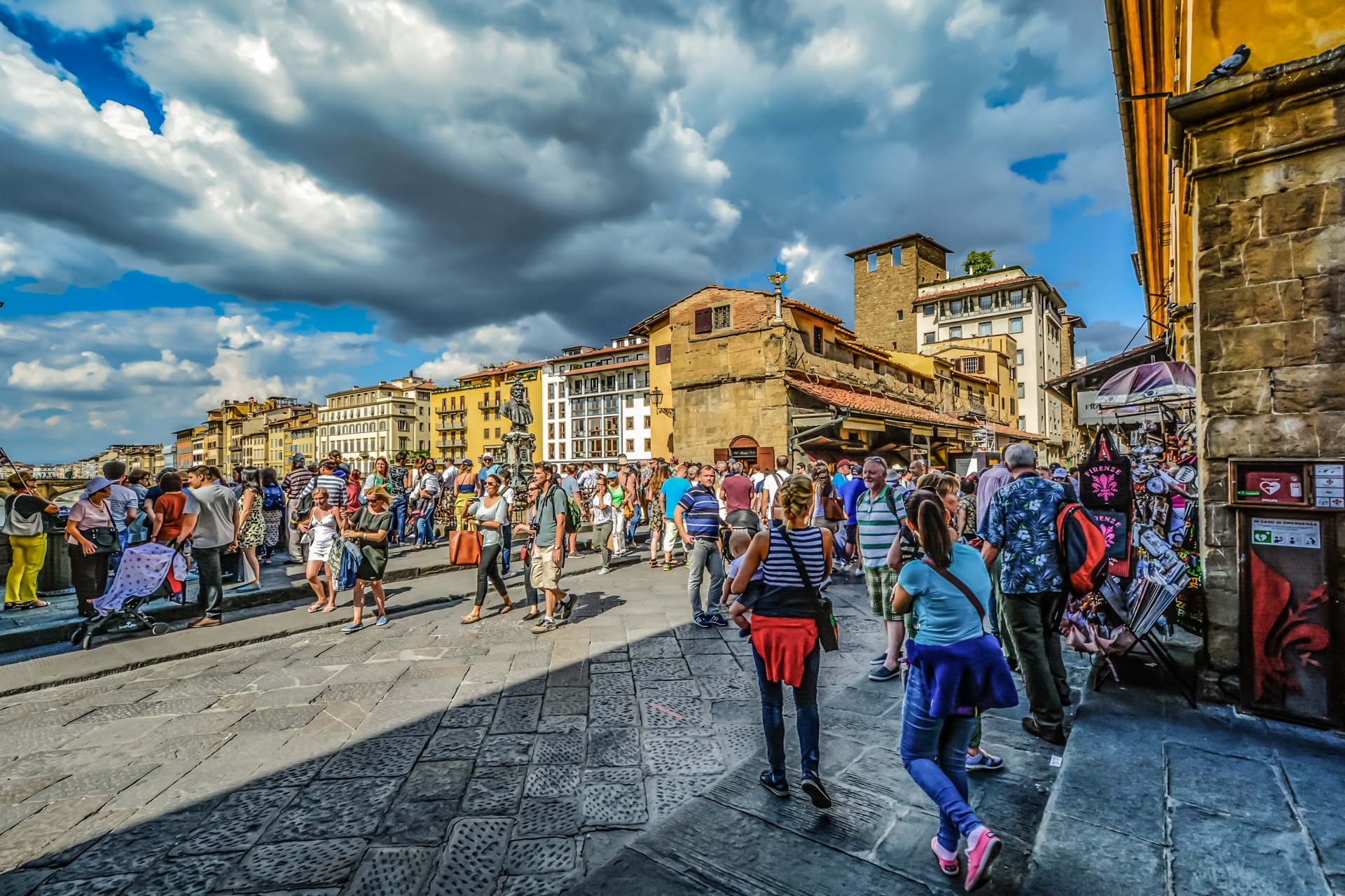
Florence boasts a wealth of attractions that captivate visitors year-round, with each season offering a unique perspective on the city's historical sites, cultural landmarks, and artistic treasures.
-
In spring, the blooming gardens and warm weather make it an ideal time to explore the Boboli Gardens and take in the breathtaking views from Piazzale Michelangelo.
-
Summer brings vibrant festivals like the Calcio Storico and outdoor concerts in the city's squares.
-
Fall is perfect for admiring the foliage along the Arno River and indulging in seasonal Tuscan cuisine at local trattorias.
-
During winter, marvel at the city's festive lights and Christmas markets, while warming up with a delicious cup of hot chocolate at a cozy café.
Spring (March - May)
During spring in Florence, visitors can explore iconic historical sites such as the Duomo, Uffizi Gallery, and Ponte Vecchio, amidst blooming gardens and pleasant weather that enhance the city's charm.
Immersing oneself in the rich history and vibrant culture of Florence, spring offers the perfect backdrop to unveil the treasures of the Renaissance. The majestic Duomo, with its intricate facade and impressive dome, stands as a testament to the city's architectural prowess. A leisurely stroll across the Ponte Vecchio, adorned with charming jewelry shops, presents a picturesque scene over the Arno River. Art enthusiasts can delve into the world-renowned Uffizi Gallery, home to masterpieces by Renaissance greats like Michelangelo and Da Vinci. Exploring these sites during this season reveals an enchanting blend of art, history, and nature.
Summer (June - August)
Summer in Florence invites visitors to discover popular tourist spots such as Piazzale Michelangelo, Boboli Gardens, and Palazzo Pitti, against the backdrop of vibrant summer festivals and outdoor events.
These attractions not only offer breathtaking views of the city but also provide a perfect setting for visitors to immerse themselves in the rich cultural heritage of Florence. The Boboli Gardens, with its stunning manicured landscapes and historical statues, create a serene oasis amidst the bustling city. Palazzo Pitti, once the residence of the powerful Medici family, showcases exquisite art collections and opulent architecture. The summer events like open-air concerts and art exhibitions further enhance the visitor experience, adding a dynamic and festive atmosphere to the city's already charming allure.
Fall (September - November)
In fall, Florence beckons travelers to explore artistic treasures at Basilica of Santa Croce, Piazza della Signoria, and Palazzo Vecchio, amidst the colorful foliage and cultural festivities that define the season.
The Basilica of Santa Croce stands as a symbol of Florence's rich cultural heritage, showcasing intricate sculptures and stunning frescoes. A visit to Palazzo Vecchio unveils the political and artistic prowess of the Renaissance era, with its grand halls adorned with masterful artworks.
During fall, these landmarks host special events like art exhibitions and concerts that add an extra layer of enchantment to visitors' experiences, allowing them to immerse themselves fully in the city's vibrant artistic ambiance.
Winter (December - February)
Winter transforms Florence into a picturesque wonderland, inviting travelers to explore charming sites like San Miniato al Monte and Fiesole, alongside festive markets and seasonal events that create a magical ambiance.
These historic locations offer panoramic views of the city, perfect for couples seeking a romantic escape. The cobblestone streets and ancient architecture bring a sense of old-world charm to the winter atmosphere. Visitors can also immerse themselves in the vibrant holiday events, such as the traditional Christmas markets filled with local crafts and delicacies. The cultural traditions in Florence during winter, like the elaborate nativity scenes and carol singing, add an enriching layer to the overall experience, making it a truly unforgettable time to visit this Italian gem.
Frequently Asked Questions
What is the best time to travel to Florence?
The best time to travel to Florence is from mid-April to mid-June and from mid-September to October when the weather is mild and there are fewer crowds.
Are there any specific events or festivals during the best time to travel to Florence?
Yes, there are several events and festivals during the best time to travel to Florence including the Maggio Musicale Fiorentino in April and May, the Festa di San Giovanni in June, and the Festa della Rificolona in September.
Is it recommended to travel to Florence during the peak tourist season?
While summer is the peak tourist season in Florence, it may not be the best time to travel as the city can get very crowded and prices for accommodation and attractions tend to be higher.
What is the weather like during the best time to travel to Florence?
During the best time to travel to Florence, the weather is generally pleasant with temperatures averaging around 22°C (72°F). However, it is always a good idea to check the forecast before your trip as weather can be unpredictable.
Are there any discounts or deals available during the best time to travel to Florence?
Yes, many hotels and attractions offer discounts and deals during the off-season in Florence, making it a more affordable time to visit. It is worth researching and comparing prices before booking.
Is it possible to see all the major attractions in Florence during the best time to travel?
While it is possible to see most of the major attractions in Florence during the best time to travel, it is recommended to plan your itinerary carefully and book tickets in advance to avoid long lines and crowds.





